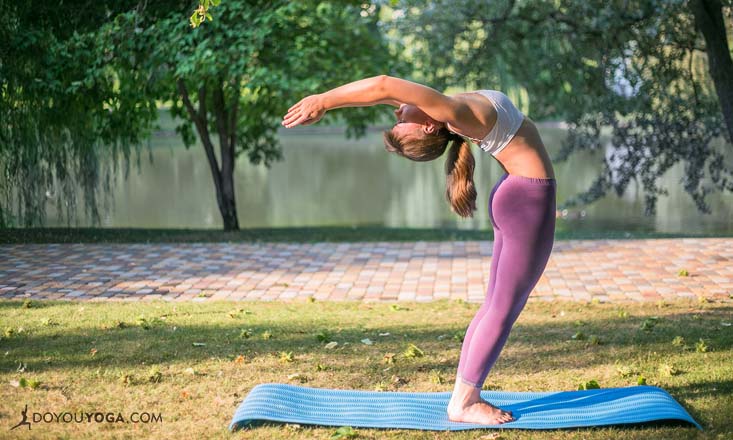Backbends tend to make an impression.
Some people absolutely love them, opening into poses like Urdhva Dhanurasana as if it’s the most natural thing. Then, there are others who dread that same moment and can’t wait for the end of class when they can lie in Savasana and pretend the whole bending backwards thing didn't happen.
If you’re one of those people who feel uncomfortable with yoga backbends, it’s perfectly understandable.
They’re counterintuitive to how we spend the majority of our days after all—we spend so much of our time in some kind of forward bend from walking, sitting, driving, playing sports, watching TV, shopping, housework to eating meals, and brushing teeth.
Postural habits can be really hard to break, and often it’s not until we start practicing yoga that we even consider the idea of stretching and moving our spine in the opposite direction.
Why do we fear going backwards?
Our fear seems to be rooted in our attitude to our bodies as we age. Have you ever seen children practicing yoga? They’re fearless in their approach! Children are usually happy to explore their range of movement with curiosity and a sense of adventure.
They bounce around in all sorts of weird and wonderful ways, and in a yoga class will leap up into Handstand without thinking and bend backwards without concern.
As we grow older, we develop a sense of rigidity in both our movements (through age and lifestyle) and in our attitude towards our bodies. Fear of the unknown can make bending backwards in yoga a daunting prospect.
We don’t know what’s going on back there, we can’t see where we’re going, and we’re not really sure how far we can actually safely go.
Obviously, our bodies don’t offer us the same scope of movement as they used to do when we were children, but we do have the ability to stay curious and open in our attitude and approach our practice without fear.
A healthy spine moves.
Our spines are made to move in six directions: forward, backward, side to side, and twisting both ways. In yoga, we prioritise a healthy range of movement in all directions for the spine in order to optimise physical and emotional wellbeing.
Not only is our spine home base to our spinal column and central nervous system, it is also the physical location of the major energy centres within the Pranic body (chakras).
Through mindful movement of the spine, we can encourage a healthy flow of energy (Prana) which can have a positive impact on the quality of our life.
Backbending postures stretch the front of the body and stimulate the nervous system and can have an energising effect. The heart opening physical action can teach us to be more open and inspire us to embrace vulnerability, love, and compassion.
Start small and support your spine.
If you’re someone who feels hesitant, uncomfortable, or fearful about backbends, then acknowledge that you feel that way, and then start small.
Doing a drop back from standing to Wheel Pose may seem like climbing Mt. Everest at this point, so try something else instead. Supported Bridge Pose with a block underneath the sacrum can be a nice introduction to backbends, as can Baby Cobra, or Reclined Baddha Konasana over a bolster.
Building your core and back strength will help and provide stability to support your beautiful spine. That alone can make a massive difference and give you confidence to move in and out of back bending postures in a way that makes you feel safe and comfortable.


